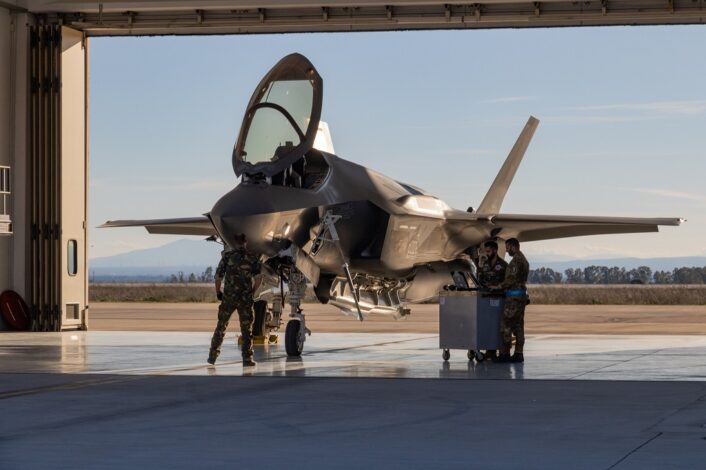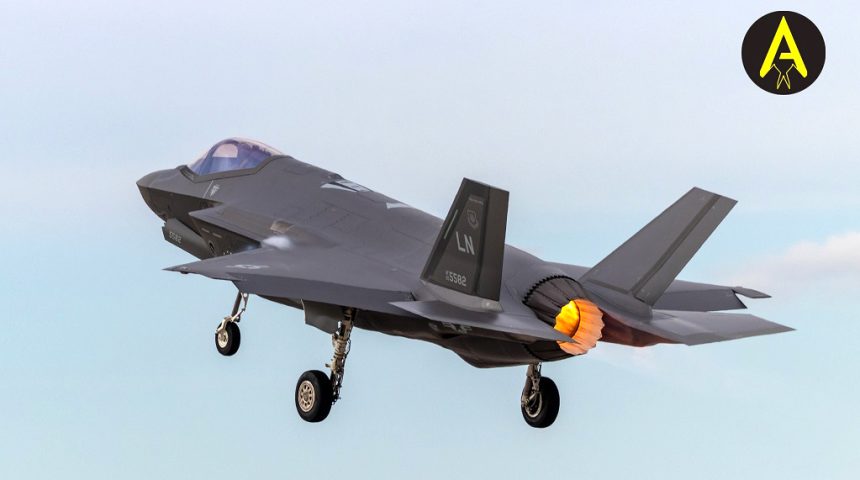After a 5-year delay, the Pentagon approved the Milestone C / Full Rate Production for the 5th gen fighter.
The Under Secretary of Defense for Acquisition and Sustainment, Dr. William A. LaPlante, approved on March 12, 2024, the Milestone C / Full Rate Production (MSC/FRP) of the F-35 Lightning II. The approval arrived with the signing of an Acquisition Decision Memorandum following a meeting with the Defense Acquisition Board on March 7.
The F-35 achieved this milestone after considering the results from the F-35 Combined Initial Operational Test and Evaluation and Live Fire Test and Evaluation Report, System Development and Demonstration exit criteria, statutory/regulatory documentation compliance, future production strategy, and draft acquisition program baseline details. Proceeding to MSC/FRP requires control of the manufacturing process, acceptable performance and reliability, and the establishment of adequate sustainment and support systems.
“This is a major achievement for the F-35 Program,” LaPlante said. “This decision—backed by my colleagues in the Department—highlights to the Services, F-35 Cooperative Program Partners, and Foreign Military Sales customers that the F-35 is stable and agile, and that all statutory and regulatory requirements have been appropriately addressed. The F-35 Program is the premier system that drives interoperability with our allies and partners while contributing to the integrated deterrence component of our National Defense Strategy.”
Even though Lockheed Martin already produced 1,000 F-35 and delivered over 990, the program was still considered in the initial operational testing phase and Low Rate Initial Production. With this milestone, the Department of Defense says the program is now well positioned to efficiently produce and deliver the aircraft to meet the evolving needs of US services, partners, and FMS customers.
“I am very proud of our team, and this is a huge accomplishment!” said Lt. Gen. Mike Schmidt, Director and Program Executive Officer, F-35 Joint Program Office. “The F-35 enterprise has made significant improvements over the last decade, and we will always be driven to continuously improve sustainability, interoperability, and lethality so warfighters have the capability needed to fight and win when called to do so. Moreover, the Program and our great people can now focus on the future of the F-35 instead of the past.”

The delay in the achievement of the Full Rate Production was mainly due to the delays of the Joint Simulation Environment, which was critical to completing the F-35 Initial Operational Test and Evaluation, which in turn was required for the Milestone C. The importance of the JSE was dictated by the fact that even the most complex exercises and test events cannot reproduce some modern threats able to saturate the aircraft capabilities.
In fact, the JSE, as stated in the Director, Operational Test and Evaluation report, provides a digital representation of test environments and integrates additional modern threat types, in greater densities, with threat capabilities not available on the open-air ranges. Testing in the JSE culminated in the final 42% (64 events) of the IOT&E’s required mission trial events, which were completed in September 2023.
“DOT&E conducted analysis of the results from Initial Operational Test and Evaluation (IOT&E) and Live Fire Test and Evaluation and delivered a comprehensive, combined report as required by statute to inform the Milestone C / Full Rate Production decision. DOT&E also provided a separate annex that assessed post-IOT&E Block 4 operational testing of the 30P06 and 30P07 software.” said Dr. Raymond D. O’Toole, Jr., Acting Director, Operational Test & Evaluation. “The Program is working to address DOT&E’s findings and recommendations contained in the report. One of DOT&E’s concerns is to continue to improve test infrastructure for support development and to ensure readiness to test of the upcoming Block 4 capabilities. This includes timely deliveries of the next iterations of F-35-In-A-Box for integration into the JSE.”
Talking about Block 4, immature and deficient Block 4 mission systems software and avionics stability problems with the new Technology Refresh 3 (TR-3) hardware, according to the DOT&E report, are causing new delays, with the deliveries of TR-3-configured aircraft on hold. The delays prevented the F-35 Joint Program Office from adequately planning the modifications of the new aircraft required for Operational Testing.
Additionally, according to the report, not all the required flight test instrumentation is on contract and might not be available in time for the testing. Furthermore, the JSE, although it was certified as ready for operational testing, still needs to correct 65 deficiencies against requirements prior and concurrent with using the JSE during the Block 4’s operational testing.









